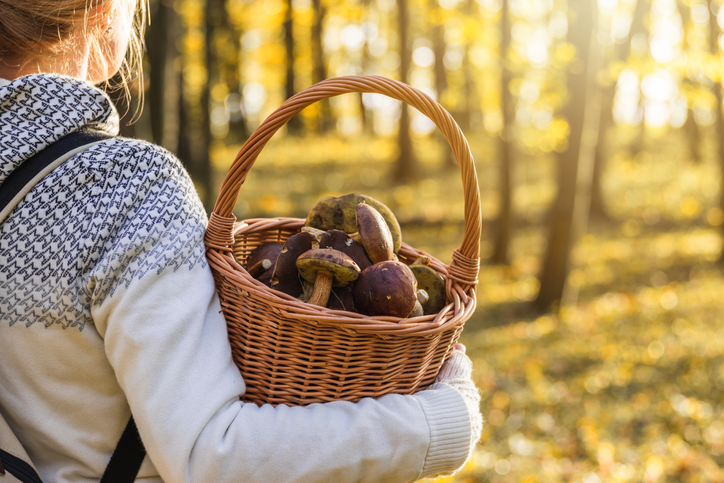Turning Mushrooms into Versatile Materials
21 Sep 2020

Researchers are exploring the remarkable potential of fungal biopolymers, such as chitin, to produce composites and nanomaterials for use in coatings, membranes, packaging and paper.
First isolated from mushrooms in 1811, chitin is the second most abundant natural biopolymer in the world. Usually sourced from the exoskeletons of crustaceans, it is used in paper manufacturing, as a food additive – and has a range of potential medical applications, such as in bandages or surgical thread.
Due to its lower purity, fungal chitin has so far largely been overlooked by materials scientists. It is usually bound with other polysaccharides, such as ß–glucan, which can occur in quantities exceeding the chitin itself. But the presence of these impurities may prove beneficial to the mechanical properties of fungal nanomaterials, such as in the nanopaper form that is both strong and tough.
From Plastic To Elastic
Fungal chitin is now attracting renewed interest as a cheap, renewable, easily isolated, and abundant alternative to more expensive, seasonally and regionally limited crustacean chitin.
Due to differences in fibre diameter and chitin to ß–glucan ratio, extracts from different fungal species can produce materials with mechanical properties – ranging from brittle, high–tensile strength, plastic-like properties, to very tough and rubber-like tensile properties if processed into paper form.
Blending extracts from different species opens opportunities to produce fungal materials with mechanical properties that lie between these extremes.
Tunable Properties
In a new study, researchers set out to produce composite nanopapers from complexes of chitin and ß–glucan extracted from two different species of mushroom.1
The scientists used a mild alkaline process to extract from the fruiting bodies of the tree bracket fungi (D. confragosa) and the common white button mushroom (A. bisporus). They then combined these in varying ratios and then hot pressed the material to form engineered composite nanopapers.
The team found that the fruiting bodies of common mushrooms have almost proportional contents of chitin and ß–glucan, which forms a nanofibrous architecture resulting in very high tensile strengths that far outperforms crustacean–derived chitin nanopapers. They went on to show that these mechanical properties can be tuned in a controlled fashion by adding tree bracket fungi extract, which comprises almost entirely of ß–glucan.
The researchers used ultrapure water produced from an ELGA PURELAB® laboratory water purification system for all their experiments, minimising the risk of adding contaminants that may affect their results.
A Cheaper, More Abundant Alternative?
This study demonstrates that fungal chitin can be easily extracted using a mild alkaline process, as opposed to the harsh demineralisation required for crustacean chitin, and then hot-pressed into engineered composite nanopapers.
The natural nanocomposite architecture of fungal chitin–ß–glucan provides additional opportunities for fine-tuning the mechanical and surface properties of fungi–derived materials – from more brittle, high tensile strength nanofibrous materials to very tough and elastomeric rubber-like materials.
These remarkable and controllable characteristics make these fungi–derived materials versatile for a wide range of potential applications, including coatings, membranes, packaging and paper.
Why Choose ELGA LabWater?
ELGA’s expert engineers, chemists and scientists are at the forefront of technological innovation. We continue to introduce game-changing features to the laboratory water market.
Reference:
1. Nawawi, W.M.F.W. et al. Fungal–derived composite nanopapers with tunable tensile properties. Composite Sci Tech 2020;198:108327 https://doi.org/10.1016/j.compscitech.2020.108327
Dr Alison Halliday
After completing an undergraduate degree in Biochemistry & Genetics at Sheffield University, Alison was awarded a PhD in Human Molecular Genetics at the University of Newcastle. She carried out five years as a Senior Postdoctoral Research Fellow at UCL, investigating the genes involved in childhood obesity syndrome. Moving into science communications, she spent ten years at Cancer Research UK engaging the public about the charity’s work. She now specialises in writing about research across the life sciences, medicine and health.
